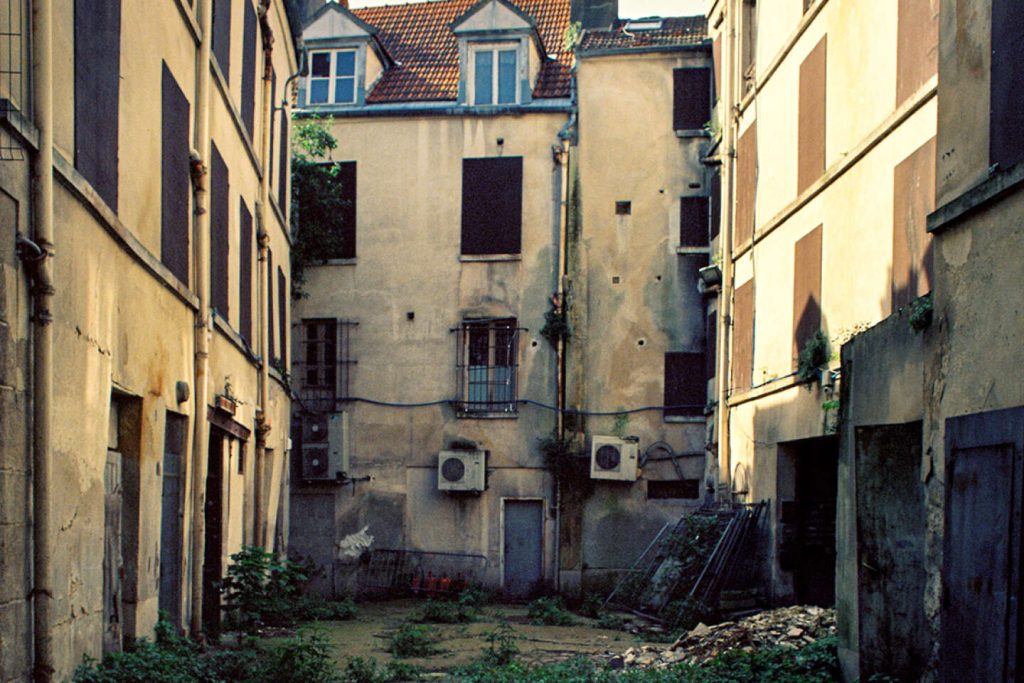Located in the courtyard of the building at 48, rue de la République in Saint-Denis on April 29, 2024, this article by Arthur Mercier for M le magazine du Monde describes the indifference that now surrounds a gray, dilapidated building in the center of Saint-Denis. This building was the site where Abdelhamid Abaaoud, the operational leader of the 2015 Paris terrorist attacks, sought refuge after the attacks at the Stade de France and the Bataclan. Accompanied by another survivor from the attacks, Chakib Akrouh, Abaaoud was helped by his cousin to find shelter in this building. They were put in contact with Jawad Bendaoud, who illegally occupied an apartment in the building. The building, located at the corner of 48 rue de la République and a small street called Corbillon, was where the fugitives hid, specifically in building C on the third floor.
Following the terrorist attacks in November 2015, this building, which was originally a place of anonymity, became the center of a major police operation. The RAID surrounded the building and launched an assault in the early hours of the morning, lasting several hours. The residents of the building, forty-five families totaling eighty people, hid under beds or in closets as the terrorists refused to surrender. After more than a thousand five hundred shots were fired, both Akrouh and Abaaoud perished in the operation. Hasna Aït Boulahcene also died, asphyxiated in the rubble. The building was left devastated after the floor collapsed as a result of the assault.
More than eight years have passed since the events in the building, and the aftermath still remains. In late April, a team from the municipality of Saint-Denis prepares to open the door to the building at 2 rue du Corbillon. The street is calm, and Katy Bontinck, the first deputy to the socialist mayor of Saint-Denis responsible for combating substandard housing and urban renewal, joins them for the first time on site. Reflecting on her experience during the time of the assault, she recalls the shock of the neighborhood being completely sealed off and the traumatizing night that followed. The residents hastily evacuated the building and never returned, leaving behind personal items still hanging from balconies.
As time has passed, the abandoned building has become a sign of nature reclaiming its space. The once bustling area surrounding the building has now become deserted, with the courtyard reclaiming its tranquility. The impact of the events that took place in the building in 2015 still lingers, with reminders of the tragic past scattered throughout. The article highlights the lasting impact of the terrorist attacks on the community and the physical remnants left behind in the building, serving as a reminder of the events that unfolded more than eight years ago.


